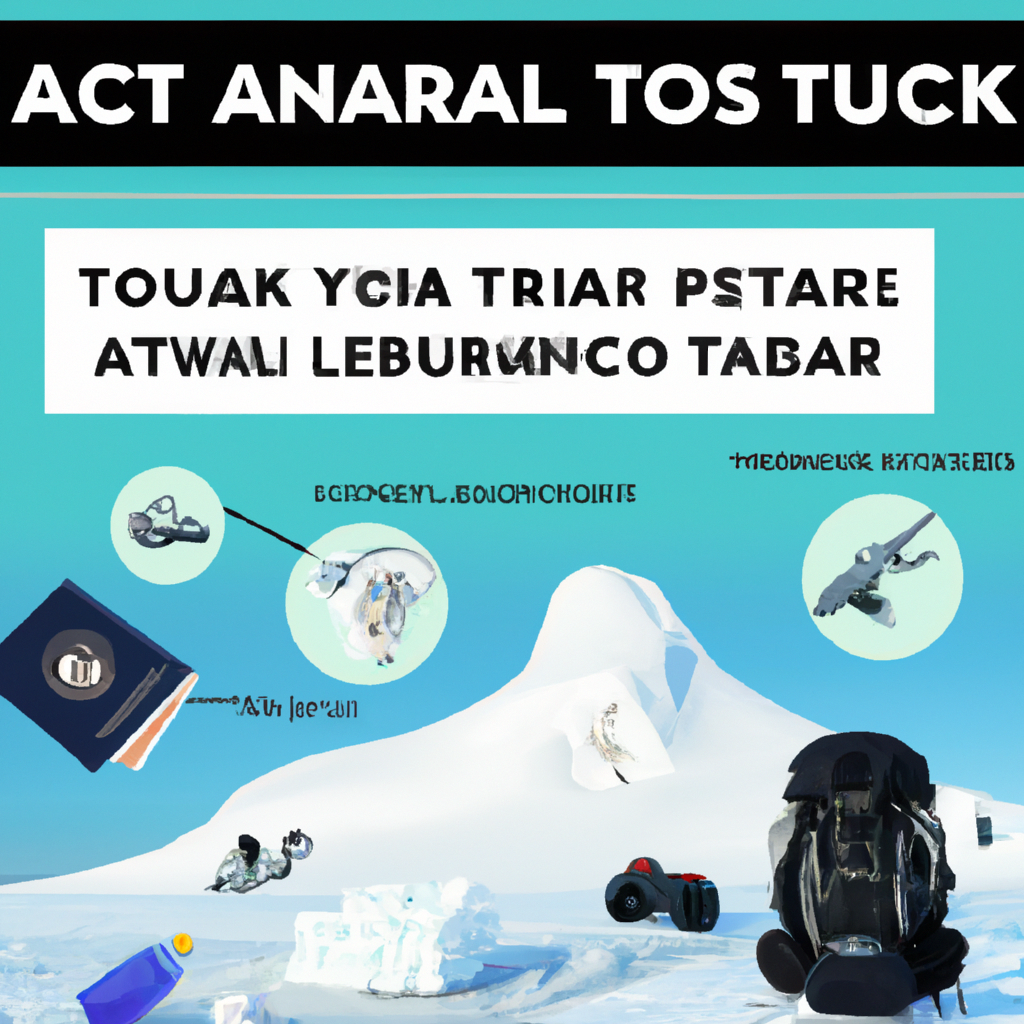Embark on an Antarctic adventure with confidence! Discover essential packing tips to make your journey to the icy continent seamless and unforgettable. Let’s dive into the world of Antarctic expedition packing together!
Packing essentials for the Antarctic
essential clothing for the antarctic
When embarking on an Antarctic adventure, packing essentials for extreme weather conditions is crucial. Here are some key clothing items to include:
– Insulated waterproof jacket and pants: Protect yourself from harsh winds and freezing temperatures.
– Thermal base layers: Keep warm with moisture-wicking materials close to your skin.
– Fleece or down mid-layers: Provide additional insulation under your outer shell.
– Waterproof gloves, hat, and scarf: Shield exposed skin from frostbite.
– Sturdy, waterproof boots: Ensure your footwear can withstand icy conditions.
equipment for the antarctic
In addition to clothing, certain equipment is indispensable for an Antarctic expedition:
– Sunglasses and sunscreen: Shield your eyes and skin from intense sun reflection on the ice.
– Headlamp or flashlight: Essential for navigating in the dark during polar nights.
– Binoculars: Enhance wildlife viewing experiences.
– Portable chargers: Keep electronic devices powered in cold temperatures.
– Medical kit: Include essentials like painkillers, blister plasters, and any necessary medications.
miscellaneous items
Don’t forget these miscellaneous items when preparing for an Antarctic adventure:
– Dry bags: Keep important items dry during Zodiac cruises or inclement weather.
– Reusable water bottle: Stay hydrated with a durable container.
– Camera or smartphone: Capture unforgettable moments in this unique landscape.
– Journal: Record your thoughts and experiences in a remote environment.
– Snacks: Pack high-energy snacks for additional sustenance in between meals.
packing tips for the antarctic
When packing for the Antarctic, keep these tips in mind to streamline your preparation:
– Layering: Dressing in layers allows for easy adjustment to changing weather conditions.
– Compression bags: Maximize luggage space by compressing clothing items.
– Research: Consult expedition guides or experienced travelers for packing recommendations.
– Weight restrictions: Be mindful of weight limits for luggage on flights to the Antarctic.
– Check equipment: Ensure all electronic devices are compatible with cold temperatures.
By prioritizing these packing essentials and tips, you’ll be well-equipped to tackle the challenges of an Antarctic adventure and fully immerse yourself in this mesmerizing icy land.
Layering for extreme cold
Embarking on an Antarctic adventure is a thrilling experience that requires careful preparation, especially when it comes to dressing for the extreme cold. The key to staying warm and comfortable in Antarctica’s frigid conditions lies in strategic layering. Here’s a guide to help you master the art of layering for your Antarctic expedition.
Base Layer: Thermal Underwear
The base layer is your first line of defense against the biting cold of Antarctica. Opt for thermal underwear made from moisture-wicking materials to keep sweat away from your skin and maintain optimal body temperature. Merino wool base layers are highly recommended for their warmth and breathability.
Mid Layer: Insulating Layers
The mid layer provides insulation to trap heat close to your body. Choose insulating layers such as fleece jackets or down vests to create a thermal barrier. These layers should be lightweight and compressible to allow for easy movement.
Outer Layer: Windproof and Waterproof Clothing
The outer layer serves as protection against the harsh Antarctic elements. Invest in a windproof and waterproof jacket and pants to shield yourself from strong winds and snow. Look for outerwear with adjustable hoods, cuffs, and hem to seal out cold air effectively.
Accessories: Hats, Gloves, and Neck Gaiters
Accessories are essential to prevent heat loss from vulnerable areas such as the head, hands, and neck. Pack insulated hats, waterproof gloves, and neck gaiters to guard against frostbite and maintain overall warmth. Choose gloves that allow dexterity for activities like photography.
Footwear: Insulated Boots and Socks
Keeping your feet warm and dry is crucial in Antarctica’s icy terrain. Opt for insulated waterproof boots with good traction to navigate through snow and ice. Pair them with moisture-wicking and insulating socks to prevent blisters and maintain comfort throughout your expedition.
Additional Tips
– Layer up: Don’t underestimate the power of layering. Adjust your clothing according to changes in temperature and activity level.
– Avoid Cotton: Cotton retains moisture and can lead to rapid heat loss. Opt for synthetic or wool materials that dry quickly.
– Bring Spares: Pack extra layers in case your clothes get wet or damp during outdoor activities.
– Test Your Gear: Before your Antarctic adventure, test your clothing layers in cold conditions to ensure they work effectively together.
By mastering the art of layering for extreme cold, you’ll be well-equipped to embrace the wonders of Antarctica while staying warm and comfortable throughout your expedition. Stay prepared, stay warm, and let the spirit of adventure guide you through this icy paradise.
Choosing suitable footwear
Understanding the Antarctic Environment
Before embarking on an Antarctic adventure, it’s crucial to comprehend the extreme conditions you will encounter. Antarctica is known for its icy terrain, sub-zero temperatures, and unpredictable weather patterns. Proper footwear is essential to ensure your comfort and safety in this challenging environment.
Key Features of Suitable Footwear
Insulation: Look for boots with high-quality insulation to keep your feet warm in the cold Antarctic climate. Materials like Thinsulate or Gore-Tex are excellent choices for trapping heat and providing thermal protection.
Waterproofing: Given the snowy and wet conditions in Antarctica, waterproof footwear is a must. Opt for boots made from waterproof materials to keep your feet dry and protected from melting ice and snow.
Grip and Traction: Antarctic terrain can be slippery and uneven, requiring footwear with excellent grip and traction. Look for boots with deep treads and sturdy soles to prevent slips and falls on icy surfaces.
Types of Footwear for Antarctic Expeditions
Snow Boots: Insulated snow boots are ideal for Antarctic expeditions, providing warmth, waterproofing, and traction. Look for boots with a high shaft to prevent snow from entering and to offer ankle support.
Crampon-Compatible Boots: If you plan on engaging in more technical activities like glacier hiking or ice climbing, consider boots that are compatible with crampons. These boots have sturdy soles designed to accommodate crampon attachments for added safety on icy terrain.
Fitting and Comfort
When selecting footwear for your Antarctic adventure, ensure a proper fit to prevent blisters and discomfort. Consider trying on boots with thick socks to mimic the conditions in Antarctica and allow for extra insulation. Walk around in the boots to test comfort and support before making your final decision.
Choosing suitable footwear for an Antarctic adventure is vital for a safe and enjoyable experience. By prioritizing insulation, waterproofing, grip, and traction, you can select the right boots to withstand the harsh conditions of Antarctica. Invest in high-quality footwear that meets the specific demands of polar exploration to make the most of your unforgettable journey to the icy continent.

